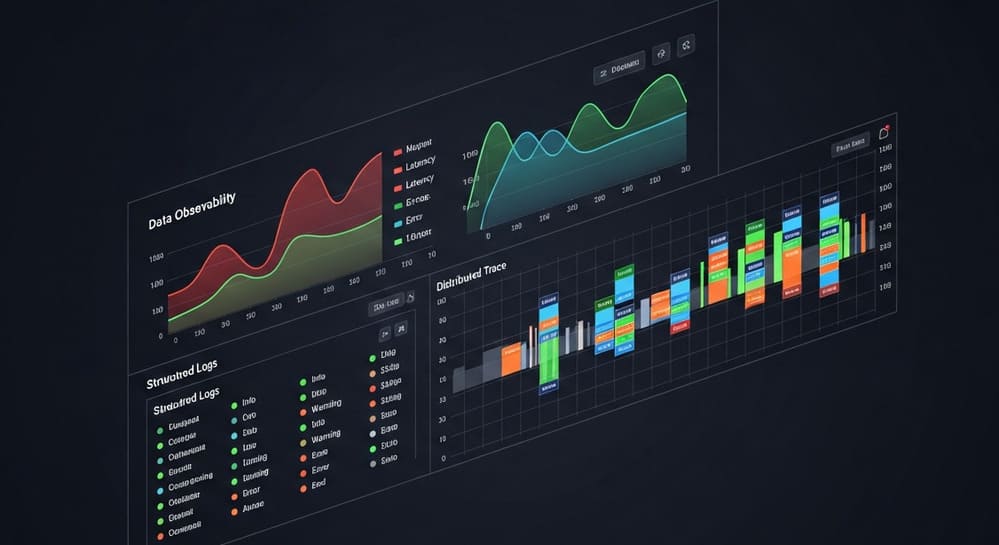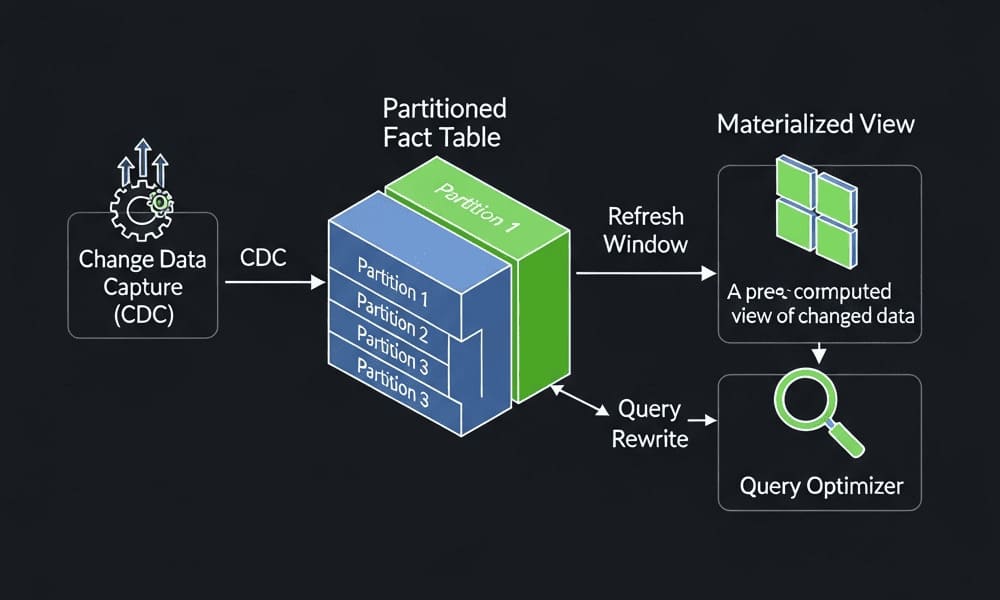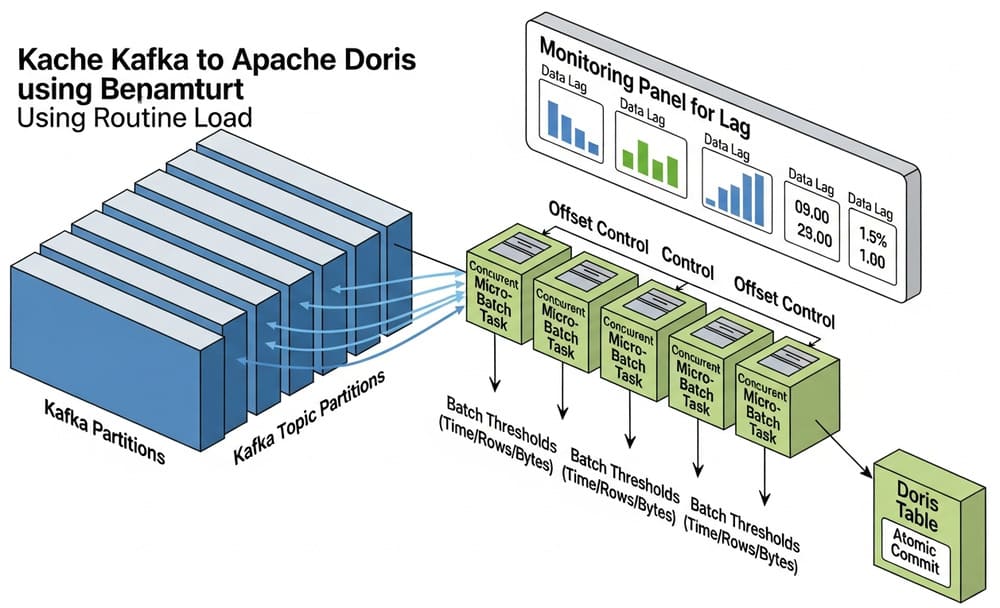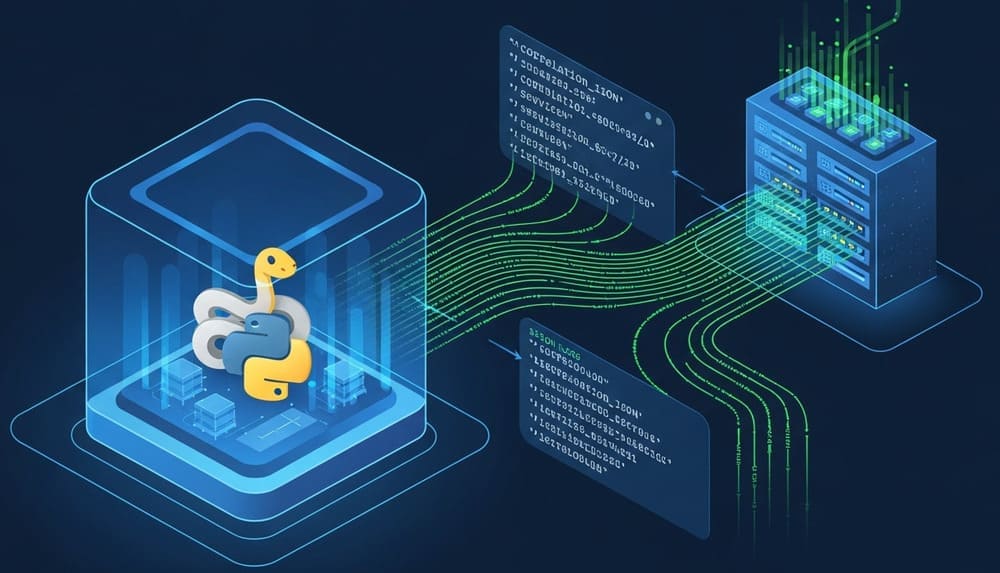Go for Data Engineers: Where It Fits, Why It’s Fast, and How to Use It
A practical guide to using Go (Golang) in data engineering: where it shines, where it doesn’t, and how to build high-throughput ingestion services, connectors, and CLIs with production-ready patterns and code.
Why this matters
Most data teams default to Python for everything and Java/Scala for Spark/Flink. That’s fine—until you need a tiny, fast, always-on service that slurps millions of events, never leaks memory, and starts in milliseconds. That’s Go’s lane.
If your dashboards are late because the ingestion edge can’t keep up—or your Python microservices are drowning in threads—Go will reduce CPU, memory, container size, and cold-start time. You’ll ship one static binary that “just runs.”
Where Go fits in a data platform
Think of the platform as two planes:
- Control plane (orchestration & analytics): SQL, dbt, Python, Spark.
- Data plane (pipes & services close to sources/sinks): Go excels here.
Common Go use cases for data engineers
- High-throughput API ingestion (REST/GraphQL/gRPC) with backpressure, retries, and idempotency.
- Event streaming producers/consumers for Kafka/Kinesis/PubSub with flat, predictable latency.
- S3/GCS/Azure Blob movers with multipart uploads, checksum verification, and parallelism.
- Lightweight gateways & adapters (e.g., normalize vendor webhooks → Kafka topics).
- Custom connectors where vendor tooling is slow, heavy, or doesn’t exist.
- Operational CLIs: schema migration tools, data backfills, checksum verifiers.
- Infra glue: tiny services around Terraform, CI/CD, and metadata catalogs.
- Warehouse ingest helpers: Snowpipe/Storage Integration kickers, batching files, emitting load manifests.
Where Go is not the right tool:
- Columnar analytics, dataframes, ad hoc transformations, or ML training. Keep those in SQL, Spark, or Python.
Architecture patterns (copyable mental models)
- API → Go collector → Kafka/Kinesis → Lake/Warehouse
Go handles auth, rate limits, retries, JSON → Avro/Parquet/JSONL, then streams records onward. - Webhook Gateway
Vendors call you → Go validates signature, deduplicates by idempotency key, pushes events to the bus. - File Ingest Worker
Go scans a landing bucket prefix, validates checksums/sizes, performs multipart upload to curated bucket, and pings Snowpipe/loader. - Backfill CLI
A single static binary runs N workers, pages through API history, and writes compressed objects with consistent partitioning.
Code: production-grade patterns in small bites
Snippets show the shape and reliability tactics you actually need in prod: context timeouts, retries with backoff, batching, and graceful shutdown.
1) Minimal Kafka producer with batching & backoff
package main
import (
"context"
"log"
"time"
"github.com/cenkalti/backoff/v4"
"github.com/segmentio/kafka-go"
)
func main() {
ctx, cancel := context.WithCancel(context.Background())
defer cancel()
w := &kafka.Writer{
Addr: kafka.TCP("kafka:9092"),
Topic: "events.raw",
Balancer: &kafka.LeastBytes{},
RequiredAcks: kafka.RequireAll,
BatchTimeout: 50 * time.Millisecond,
BatchSize: 500, // tune based on throughput & latency SLO
}
send := func(msgs []kafka.Message) error {
bo := backoff.NewExponentialBackOff()
bo.MaxElapsedTime = 2 * time.Minute
return backoff.Retry(func() error {
ctx2, cancel := context.WithTimeout(ctx, 10*time.Second)
defer cancel()
return w.WriteMessages(ctx2, msgs...)
}, bo)
}
// Example: send 1k messages
var batch []kafka.Message
for i := 0; i < 1000; i++ {
batch = append(batch, kafka.Message{Key: []byte("k1"), Value: []byte(`{"id":123,"ts":1699999999}`)})
if len(batch) >= 500 {
if err := send(batch); err != nil {
log.Fatalf("send failed: %v", err)
}
batch = batch[:0]
}
}
if len(batch) > 0 {
if err := send(batch); err != nil {
log.Fatalf("send failed: %v", err)
}
}
_ = w.Close()
}
Why this works: batched writes cut broker round-trips; exponential backoff absorbs transient broker issues; timeouts prevent hung writes.
2) S3 multipart uploader with checksums & context
package s3uploader
import (
"context"
"crypto/md5"
"encoding/hex"
"os"
"time"
"github.com/aws/aws-sdk-go-v2/aws"
"github.com/aws/aws-sdk-go-v2/config"
"github.com/aws/aws-sdk-go-v2/feature/s3/manager"
"github.com/aws/aws-sdk-go-v2/service/s3"
)
func Upload(ctx context.Context, bucket, key, path string) (string, error) {
ctx, cancel := context.WithTimeout(ctx, 5*time.Minute)
defer cancel()
cfg, err := config.LoadDefaultConfig(ctx)
if err != nil {
return "", err
}
f, err := os.Open(path)
if err != nil {
return "", err
}
defer f.Close()
h := md5.New()
if _, err := os.Stat(path); err != nil {
return "", err
}
// (optional) compute MD5 if you need strong integrity checks
if _, err := f.Seek(0, 0); err != nil {
return "", err
}
if _, err := manager.ReadSeekableStream(f).ReadFrom(h); err != nil {
return "", err
}
sum := hex.EncodeToString(h.Sum(nil))
if _, err := f.Seek(0, 0); err != nil {
return "", err
}
client := s3.NewFromConfig(cfg)
uploader := manager.NewUploader(client, func(u *manager.Uploader) {
u.PartSize = 8 * 1024 * 1024
u.Concurrency = 4
})
_, err = uploader.Upload(ctx, &s3.PutObjectInput{
Bucket: aws.String(bucket),
Key: aws.String(key),
Body: f,
ContentMD5: aws.String(sum),
ChecksumMD5: aws.String(sum),
ContentType: aws.String("application/json"),
StorageClass: "STANDARD_IA",
})
return sum, err
}
Why this works: multipart uses parallel parts; checksum defends against silent corruption; context enforces a hard deadline.
3) Worker pool with backpressure (for API → S3/Kafka)
type Job struct {
Page int
}
func worker(ctx context.Context, jobs <-chan Job, results chan<- int, fetch func(context.Context, int) (int, error)) {
for {
select {
case <-ctx.Done():
return
case j, ok := <-jobs:
if !ok { return }
n, err := fetch(ctx, j.Page)
if err != nil { continue } // log + metrics in real code
results <- n // e.g., records fetched
}
}
}
func run(ctx context.Context, pages int, fetch func(context.Context, int) (int, error)) int {
const W = 8
jobs := make(chan Job, W) // bounded channel = backpressure
results := make(chan int, W)
for i := 0; i < W; i++ { go worker(ctx, jobs, results, fetch) }
go func() {
for p := 1; p <= pages; p++ { jobs <- Job{Page: p} }
close(jobs)
}()
total := 0
for i := 0; i < pages; i++ { total += <-results }
return total
}
Why this works: bounded channels cap concurrent requests (so you don’t DOS the source), while keeping cores busy.
Best practices (what actually keeps it running)
Reliability
- Use
context.Contexteverywhere; set timeouts on all network calls. - Retries: exponential backoff with jitter (
cenkalti/backoff), but make operations idempotent (dedupe keys, upserts). - Batching: amortize I/O; pick sizes by latency SLO and broker limits.
- Exactly-once is a myth at scale; shoot for at-least-once + idempotent sinks.
Project layout
cmd/<app>/main.go,internal/for private packages,pkg/for shared libraries.- Config via env/flags; provide sane defaults. Embed version with
-ldflags "-X main.version=$(git rev-parse --short HEAD)".
Observability
- Structured logs (
log/slogoruber-go/zap); include request IDs, offsets, partition info. - Metrics (Prometheus) for throughput, error rate, queue depth, retry count, lag.
- Tracing (OpenTelemetry) across producer → broker → consumer → loader.
Performance
- Reuse buffers (
bytes.Buffer), avoid per-record allocations, stream I/O with bufio. - Profile CPU/allocs with
pprof; fix hotspots before touching GC flags. - Tune GOMAXPROCS for container CPU limits; keep goroutines cheap but not unbounded.
Security
- Least-privilege IAM for buckets/queues; rotate credentials; sign webhooks.
- Validate payloads early; drop on schema violation instead of “best effort.”
Containerization & deploy
- Build static binaries; use
distrolessorscratchimages for tiny attack surface. - Cold starts are fast; Go fits Lambda/Cloud Run/Kubernetes Jobs nicely.
- One binary = fewer supply-chain headaches vs multi-layer runtimes.
When to choose Go vs Python vs Java (pragmatic table)
| Task | Go | Python | Java/Scala |
|---|---|---|---|
| API ingestion at high QPS | Best (concurrency, small mem) | OK until throughput rises | Good, heavier runtime |
| Kafka/Kinesis producer | Great | OK (libs exist, overhead higher) | Great |
| Stream processing (Flink/Spark) | Possible (custom) | Limited | Best |
| Connectors/Daemons/CLIs | Best | Good, slower starts | Good, heavier |
| Dataframe transforms/ML | Weak | Best | OK (but not idiomatic) |
| Long-lived platform services | Great | Fair | Great |
Real-world usage patterns
- Webhook normalizer: Go service validates HMAC, dedupes
event_id, enriches with tenant metadata, and publishes toevents.raw. Cut p95 latency from 120ms (Python) to 25ms with ⅓ memory. - Backfill tool: Single Go binary ran 32 workers fetching 1.2B records from a crusty API, writing GZIP JSONL to S3 with deterministic partitioning—resumable, idempotent, and observable.
- Snowflake ingest helper: Go job compacts small landing files into 128MB objects, writes manifests, and calls Snowpipe REST to trigger loads; metadata/metrics go to Prometheus and a Slack alert on lag.
Pitfalls (so you don’t learn them in prod)
- Don’t over-spawn goroutines. Bound worker pools; watch memory and external rate limits.
- Generics help, but don’t chase cleverness. Keep APIs concrete; measure before “optimizing.”
- Library gaps. Analytics stacks are thinner than Python; keep transforms in SQL/Spark and use Go to move data reliably.
- Schema drift. Validate at the edge; reject unknown fields instead of forwarding junk.
Getting started (fast path)
- Install: Go 1.22+.
- Scaffold:
go mod init your.org/ingestor && mkdir -p cmd/ingestor internal/… - Pick libs: kafka-go or confluent-kafka-go; AWS SDK v2 / GCP Storage;
cenkalti/backoff;slogorzap; Prometheus client; OpenTelemetry. - Ship a CLI first, then turn it into a service if it must be always-on.
- Bake in observability from day one (metrics, logs, traces). Future you will thank you.
Conclusion / takeaways
- Use Go at the edges of your data platform: ingestion, connectors, gateways, and operational CLIs.
- You’ll get lower latency, fewer resources, and simpler ops than an equivalent Python service.
- Keep analytics in SQL/Spark/Python; let Go do what it’s excellent at—moving bytes fast and safely.
- Production quality is about timeouts, retries, idempotency, batching, and observability—the examples above show the core patterns.




